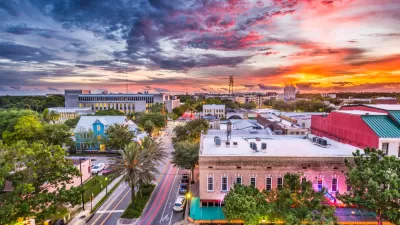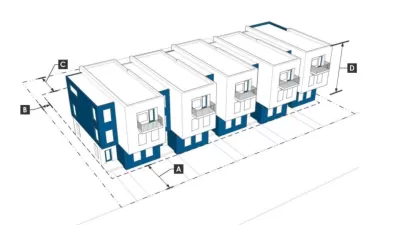Urbanism media noted the growing privatization of recreation facilities, such as pools, as one of the lessons to be taken from a controversial encounter between police and black teenagers in McKinney, Texas over the weekend.
Coverage of a disturbing video that emerged earlier this week noted that racial conflict often emerges at the location of controversial distinctions between public and private.
Yoni Applebaum writes for The Atlantic, drawing insight out of a discussion about the communal pool, located in a private development and off-limits to the public, at the center of the episode that led to the controversy. "The public pools of mid-century—with their sandy beaches, manicured lawns, and well-tended facilities—are vanishingly rare. Those sorts of amenities are now generally found behind closed gates, funded by club fees or homeowners’ dues, and not by tax dollars. And they are open to those who can afford to live in such subdivisions, but not to their neighbors just down the road."
Brentin Mock covers a similar theme for Grist, focusing on the long and often misreported history of Black Americans fighting for access to pools as well as natural settings to swim.
Emily Badger follows Applebaum's theme for The Washington Post, but also makes a connection between the "privately owned public spaces" that made news during the Occupy protests. "This exact same phenomenon has surfaced in many forms well beyond swimming pools. Americans have replaced — or, rather, withdrawn from — many of the public spaces and shared resources that were prominent in communities decades ago. And so private schools take the place of public ones, individually owned cars replace mass transit, secluded yards supplant public parks," writes Badger.
For CityLab, Kriston Capps notes the city of McKinney's central role in a closely watched Supreme Court case, Texas Department of Housing and Community Affairs v. The Inclusive Communities Project, Inc., which is expected to reach a verdict this month. According to Capps, "the Supreme Court case that now concerns McKinney is larger than any single exclusionary amenity. The Roberts court may redefine exclusionary zoning altogether. What the Supreme Court does next will decide whether residents of McKinney—and Flower Mound, and Lewisville, and Sunnyvale, and Frisco, and suburbs and cities far beyond Dallas and Texas—can erect informal barriers to keep poor black residents not just out of their pools, but out of white, wealthy areas in an altogether more profound way."
FULL STORY: McKinney, Texas, and the Racial History of American Swimming Pools

Pennsylvania Mall Conversion Bill Passes House
If passed, the bill would promote the adaptive reuse of defunct commercial buildings.

Planning for Accessibility: Proximity is More Important than Mobility
Accessibility-based planning minimizes the distance that people must travel to reach desired services and activities. Measured this way, increased density can provide more total benefits than increased speeds.

World's Largest Wildlife Overpass In the Works in Los Angeles County
Caltrans will soon close half of the 101 Freeway in order to continue construction of the Wallis Annenberg Wildlife Crossing near Agoura Hills in Los Angeles County.

Amtrak Takes Lead on Texas Central Rail
The high-speed rail project isn’t a done deal, but if it moves forward, trains could begin operating in 2030.

Maine Approves Rent Relief Program
Legislators hope the assistance program will help struggling low-income households avoid eviction.

How Transit Architecture Impacts Real and Perceived Safety
More than a third of Americans believe major transit systems are too unsafe to ride. The built environment can change that.
City of Costa Mesa
Licking County
Barrett Planning Group LLC
HUD's Office of Policy Development and Research
Mpact Transit + Community
HUD's Office of Policy Development and Research
Tufts University, Department of Urban and Environmental Policy & Planning
City of Universal City TX
ULI Northwest Arkansas
Urban Design for Planners 1: Software Tools
This six-course series explores essential urban design concepts using open source software and equips planners with the tools they need to participate fully in the urban design process.
Planning for Universal Design
Learn the tools for implementing Universal Design in planning regulations.


























